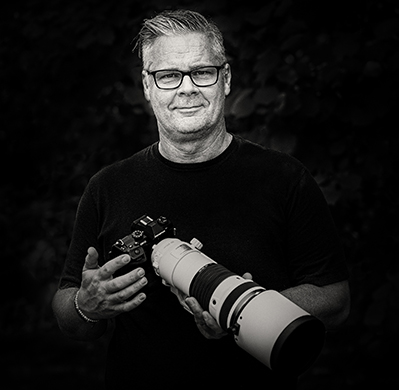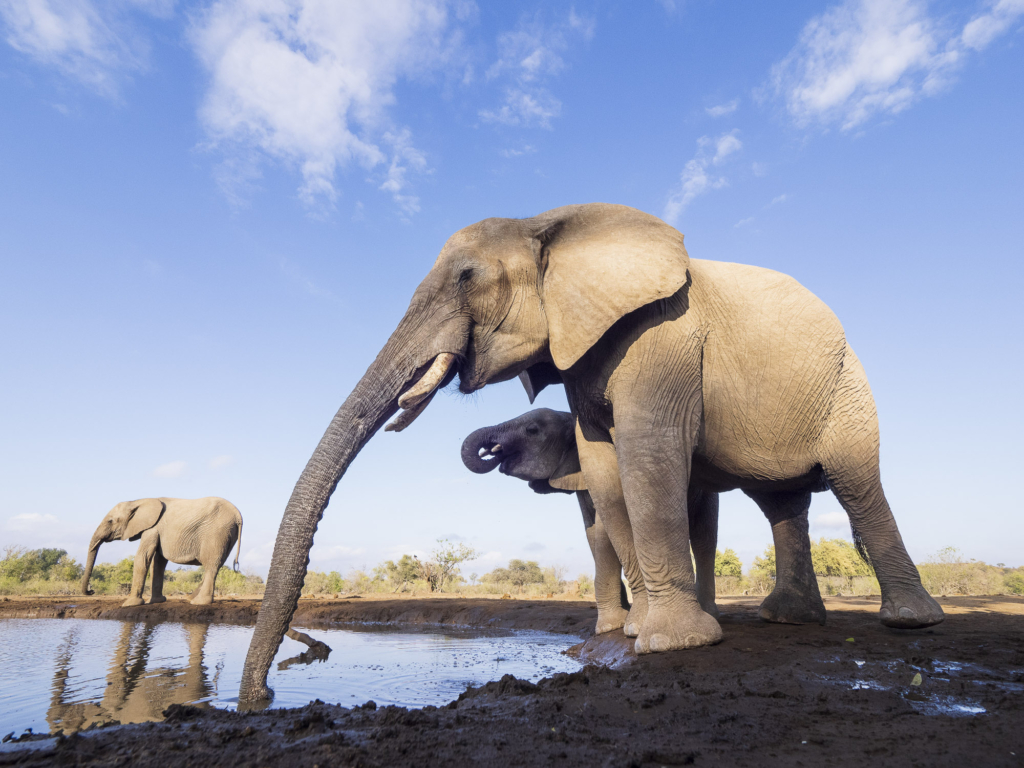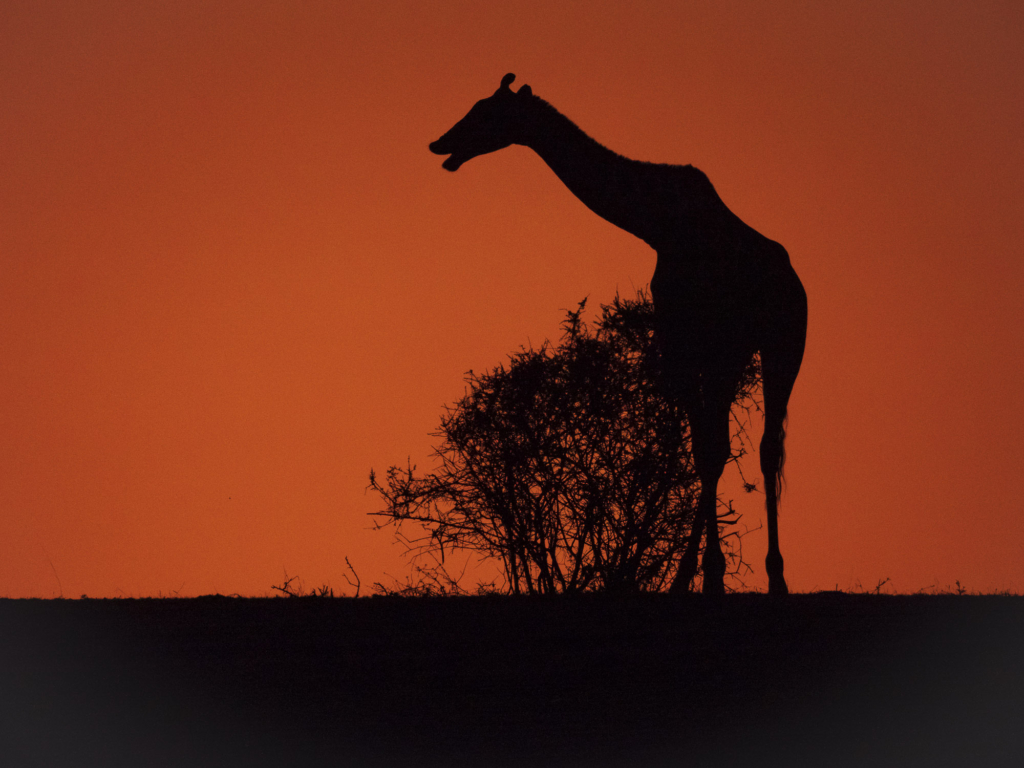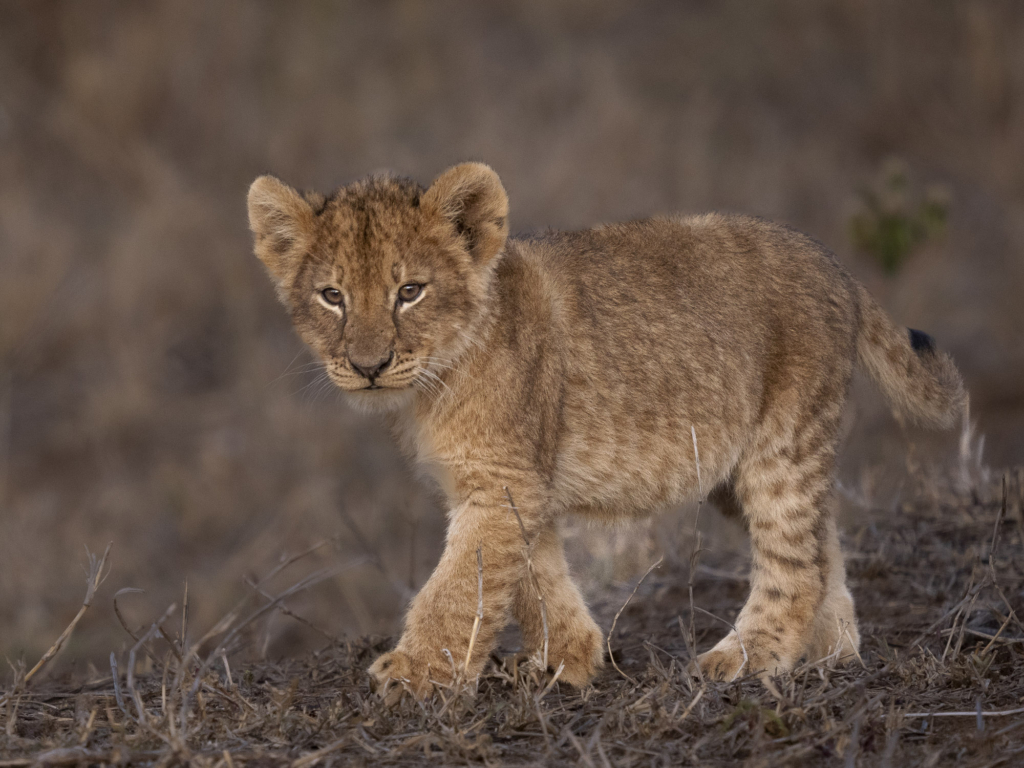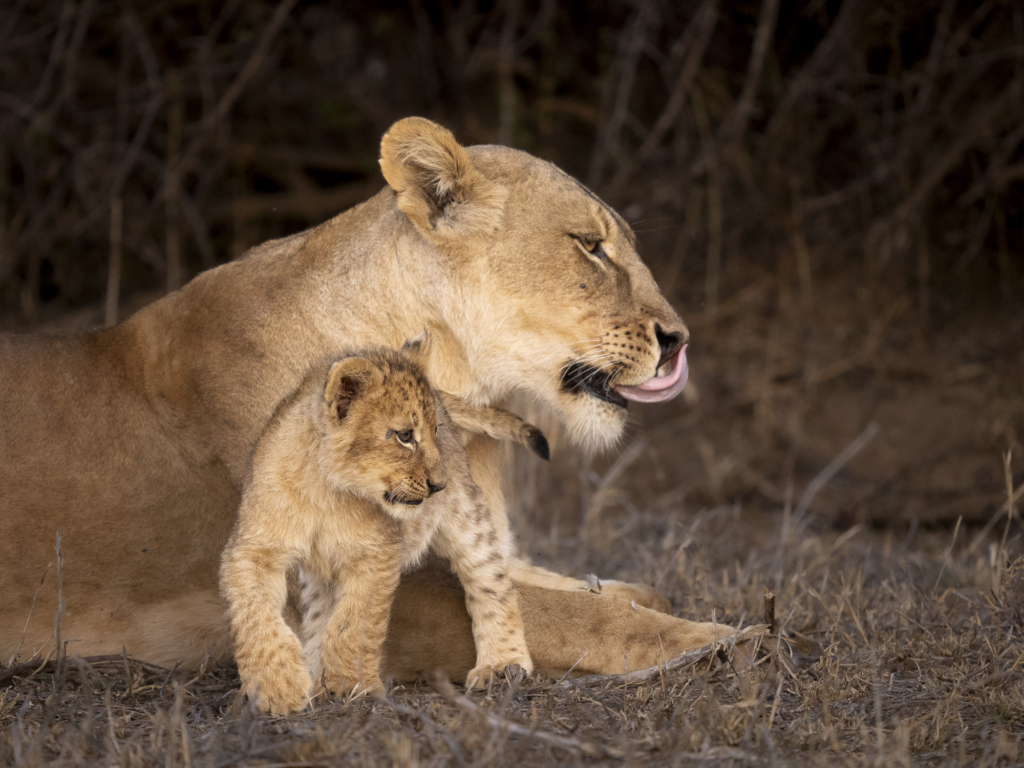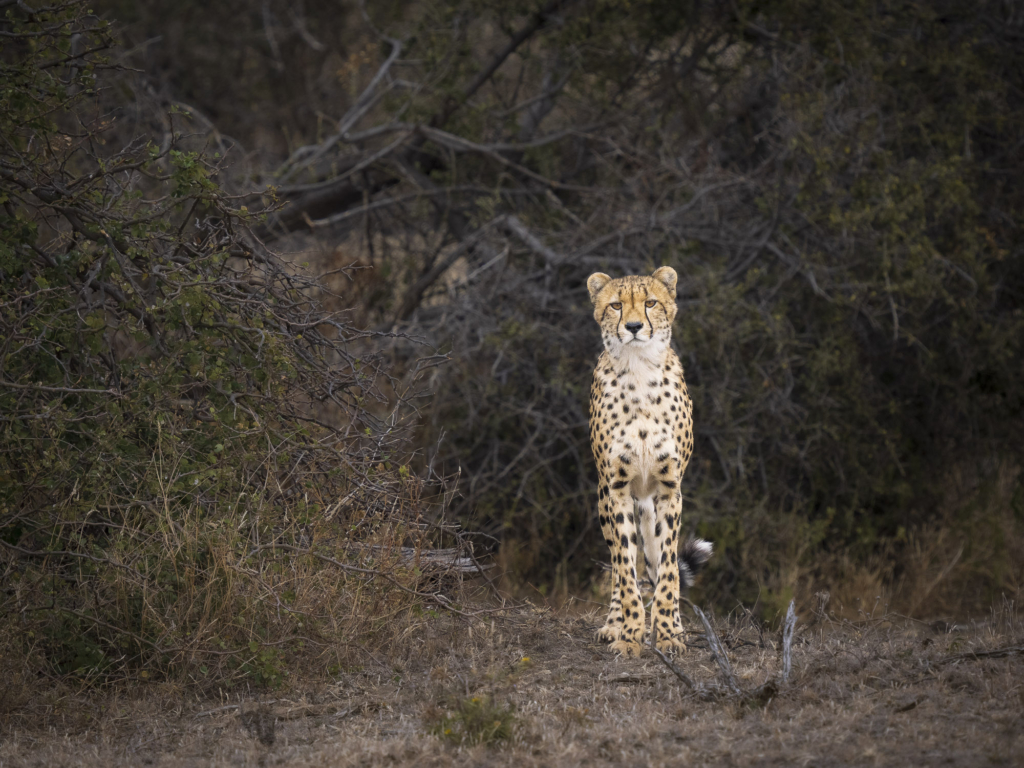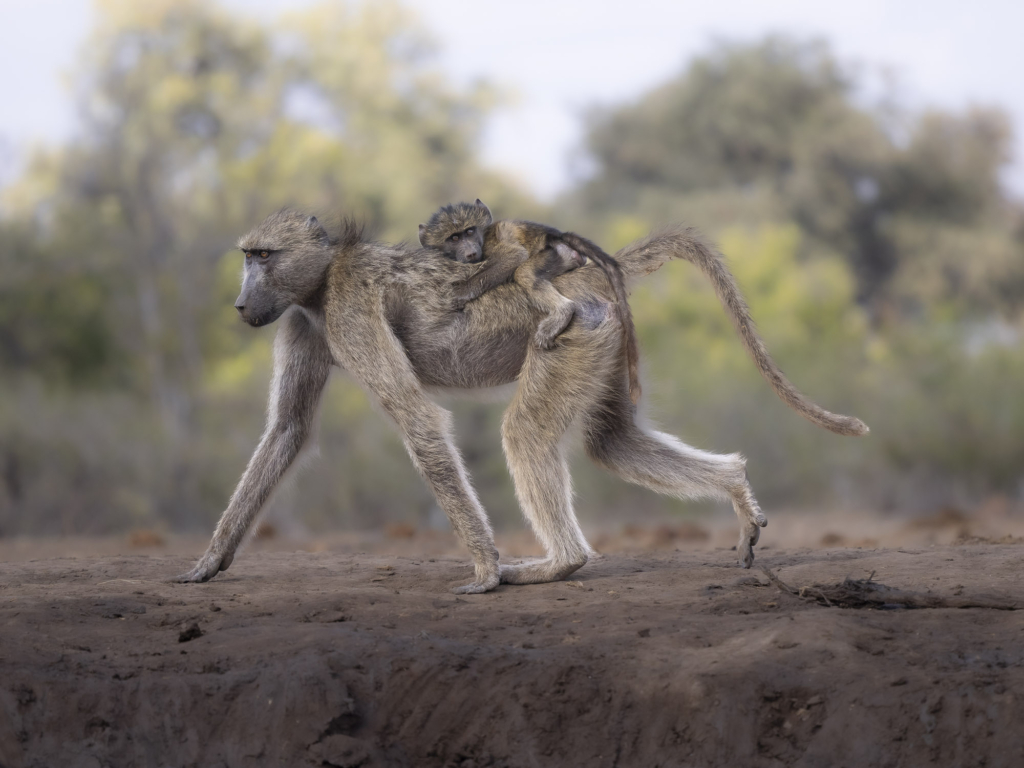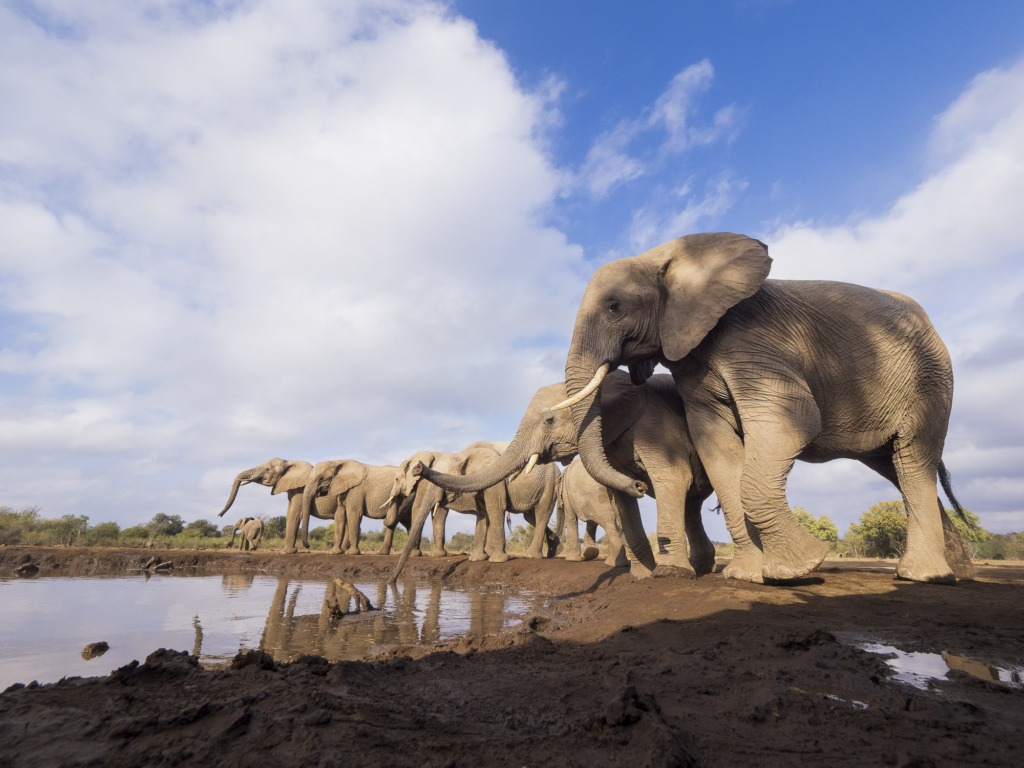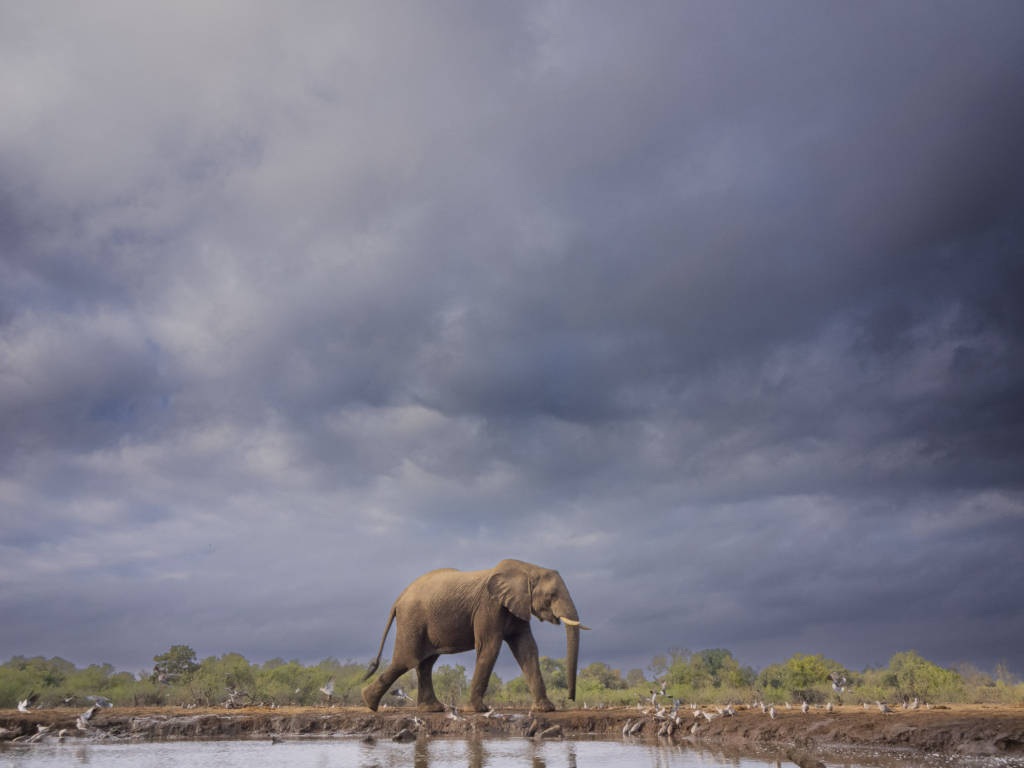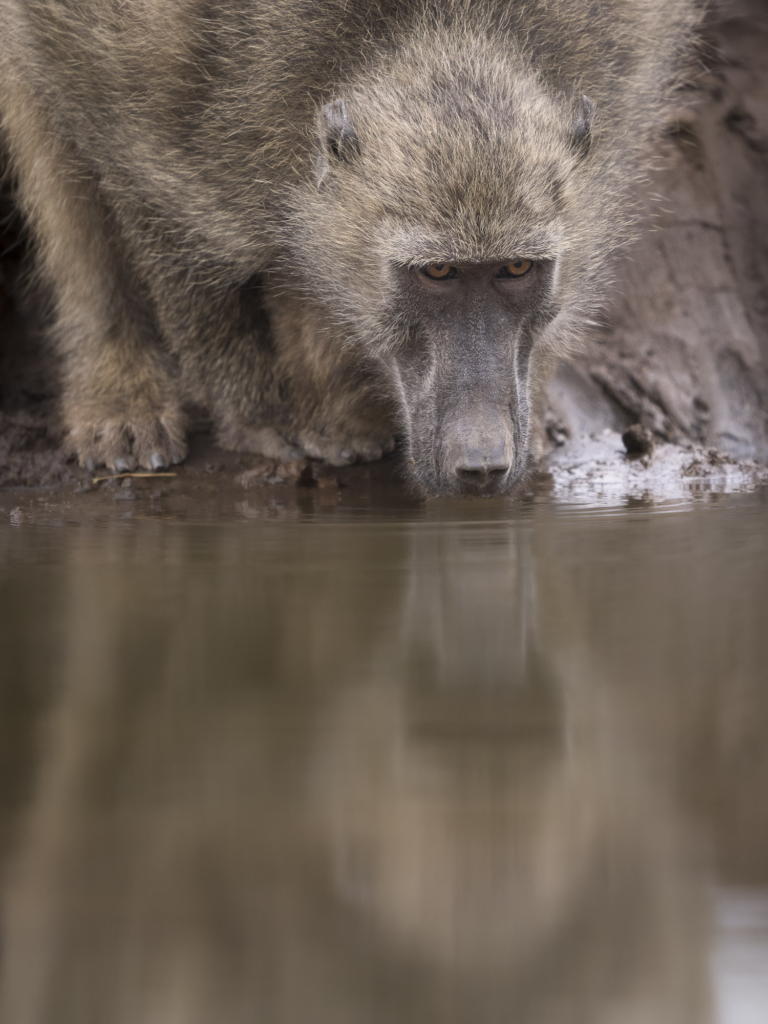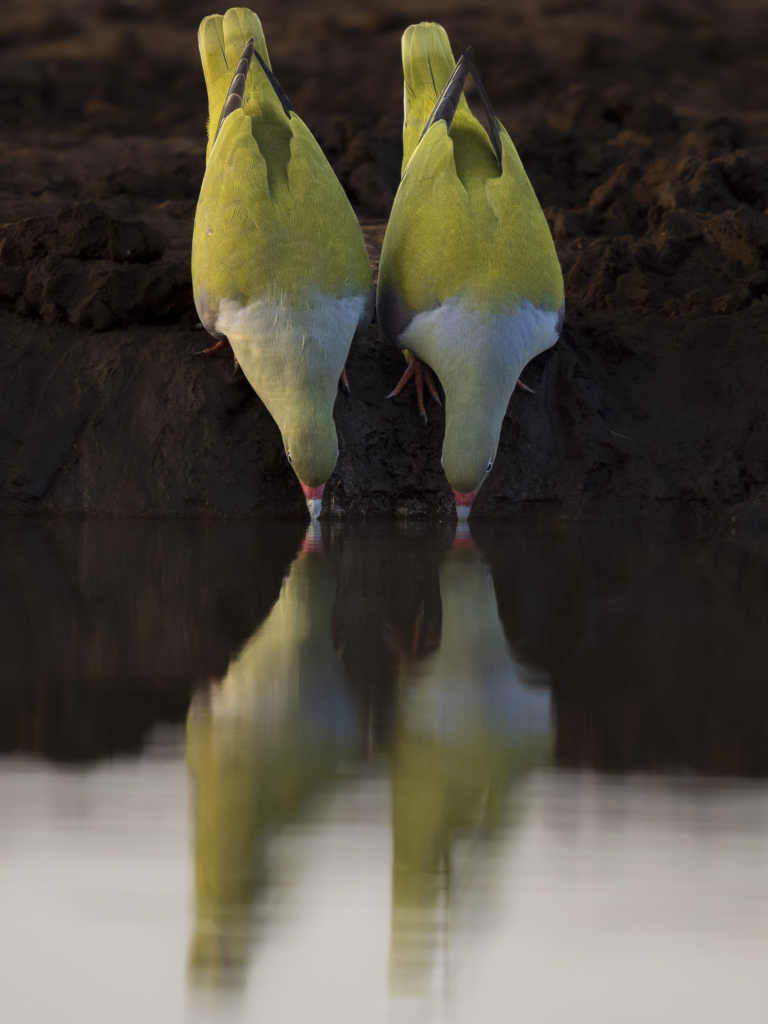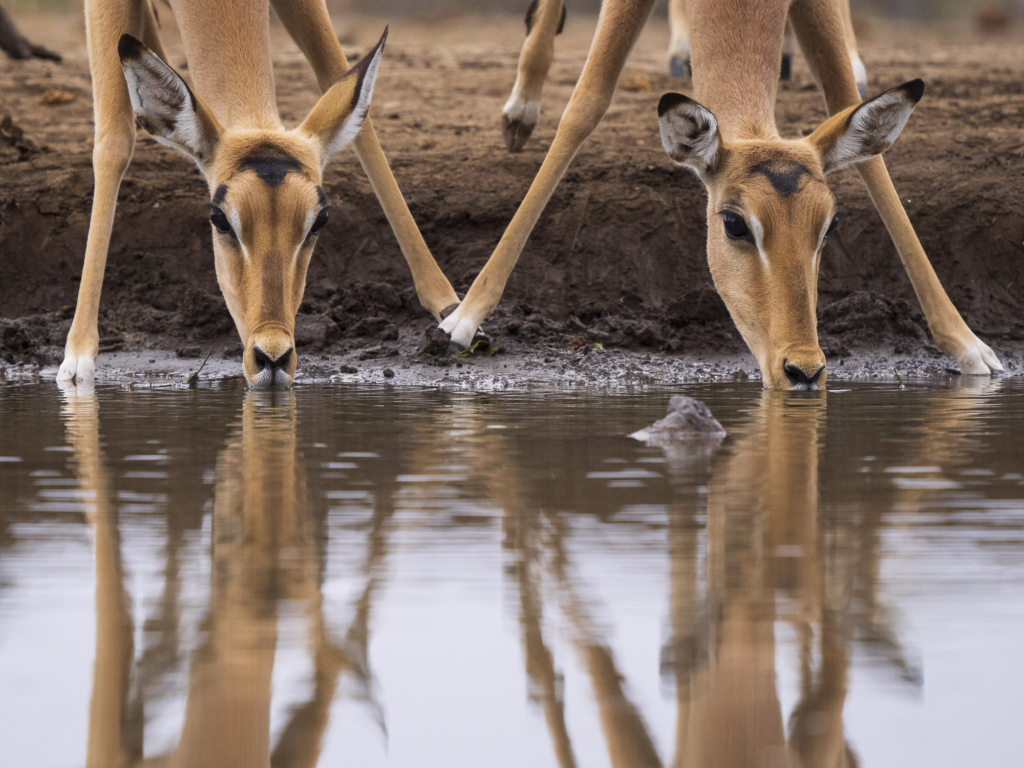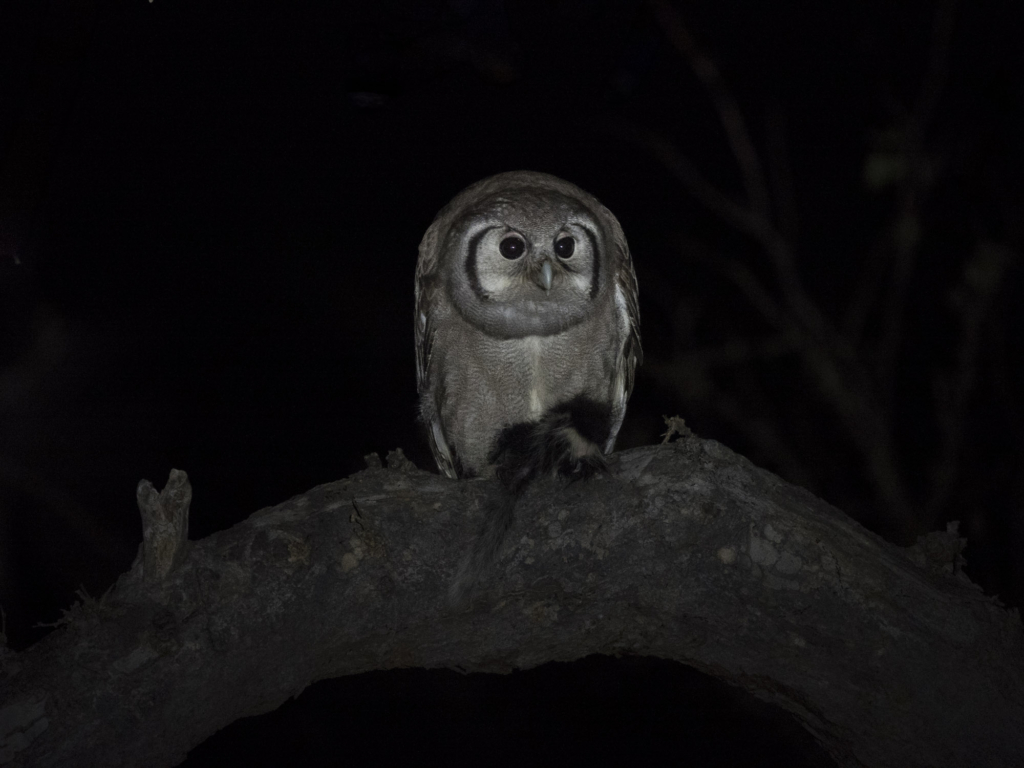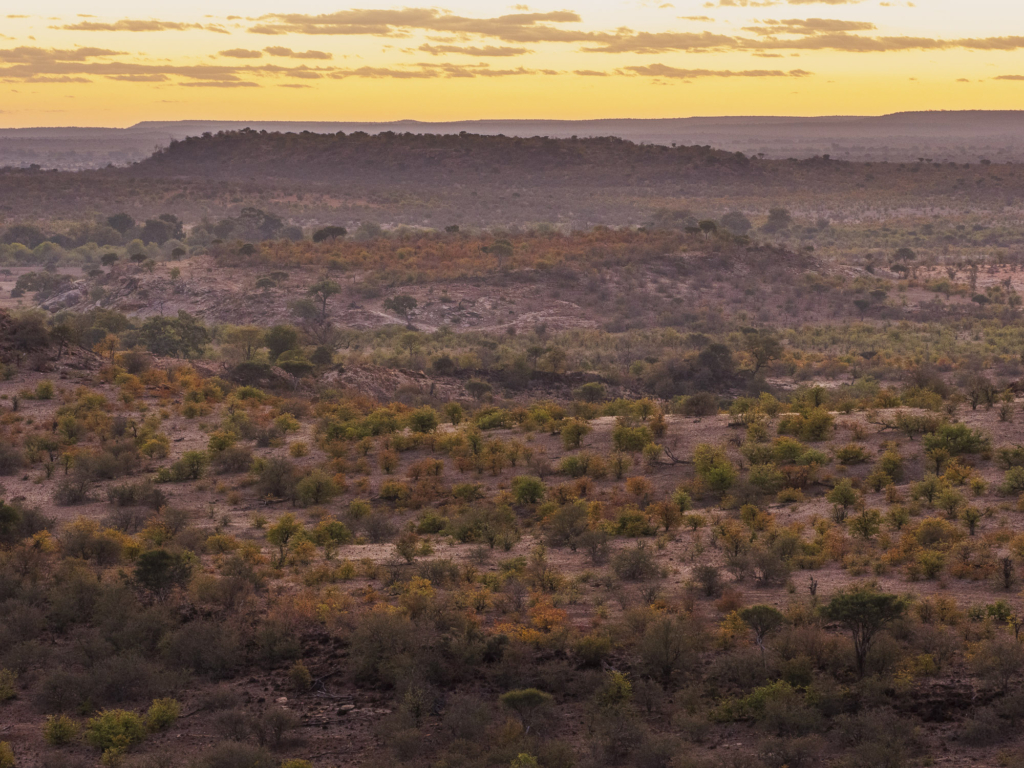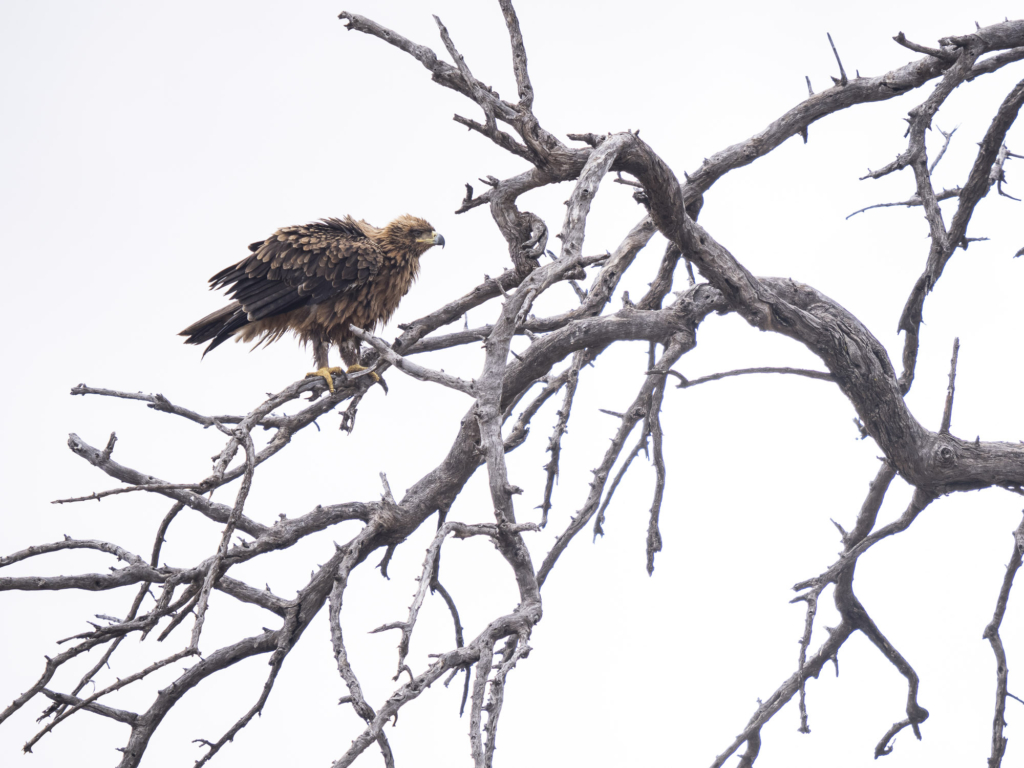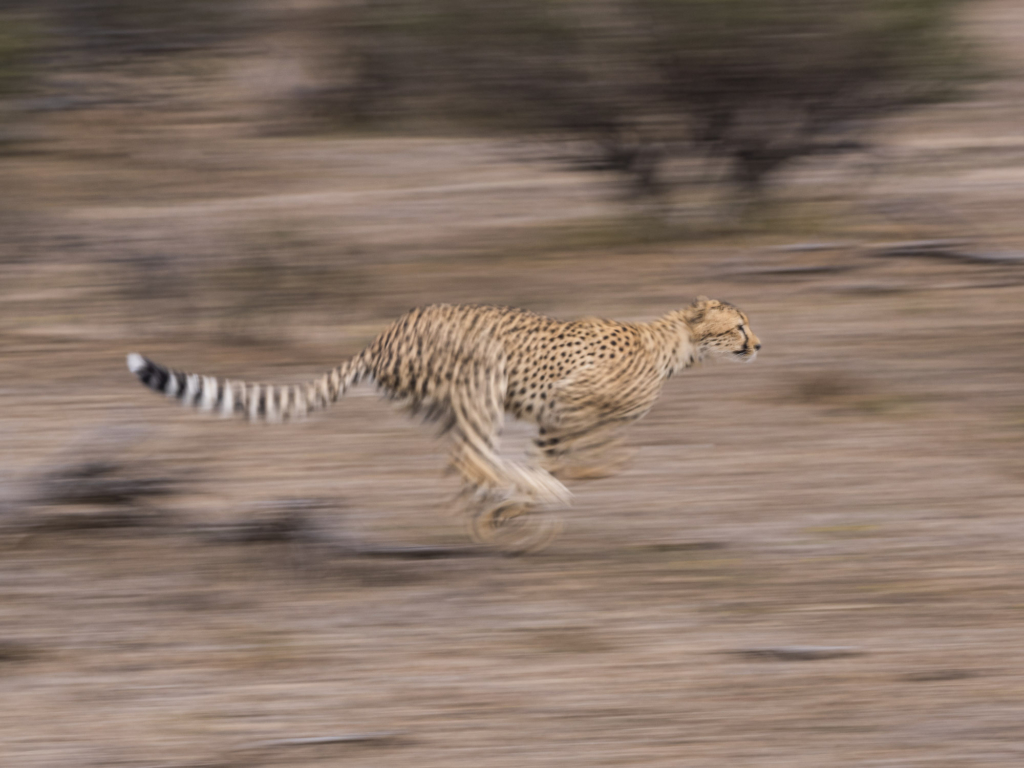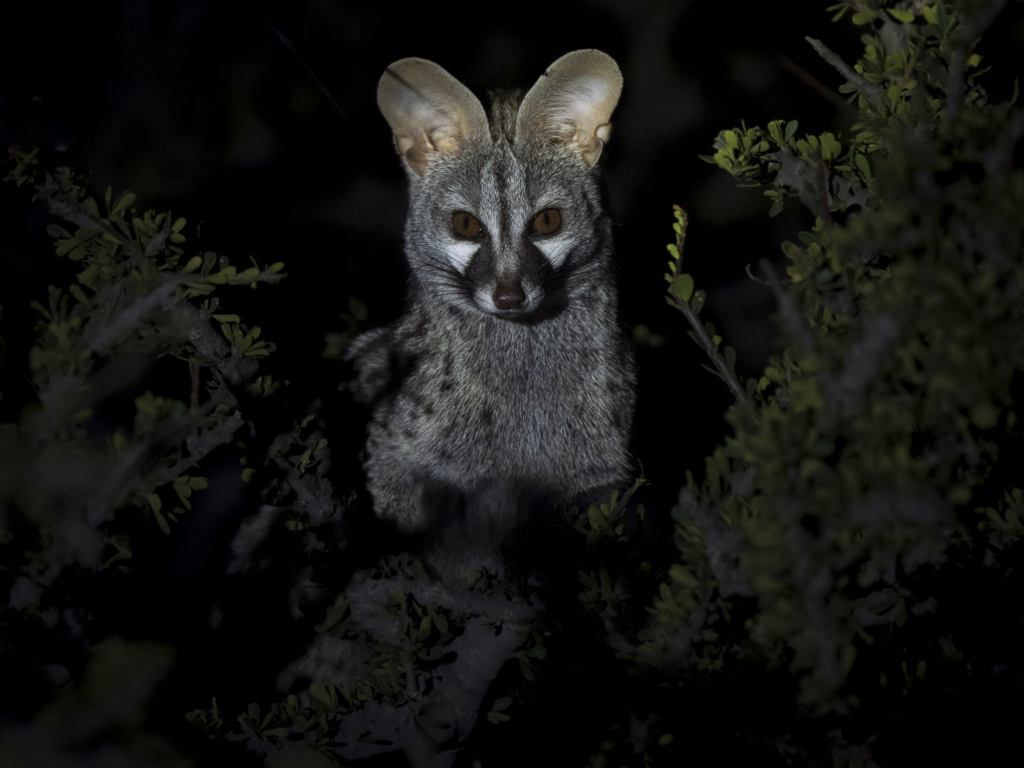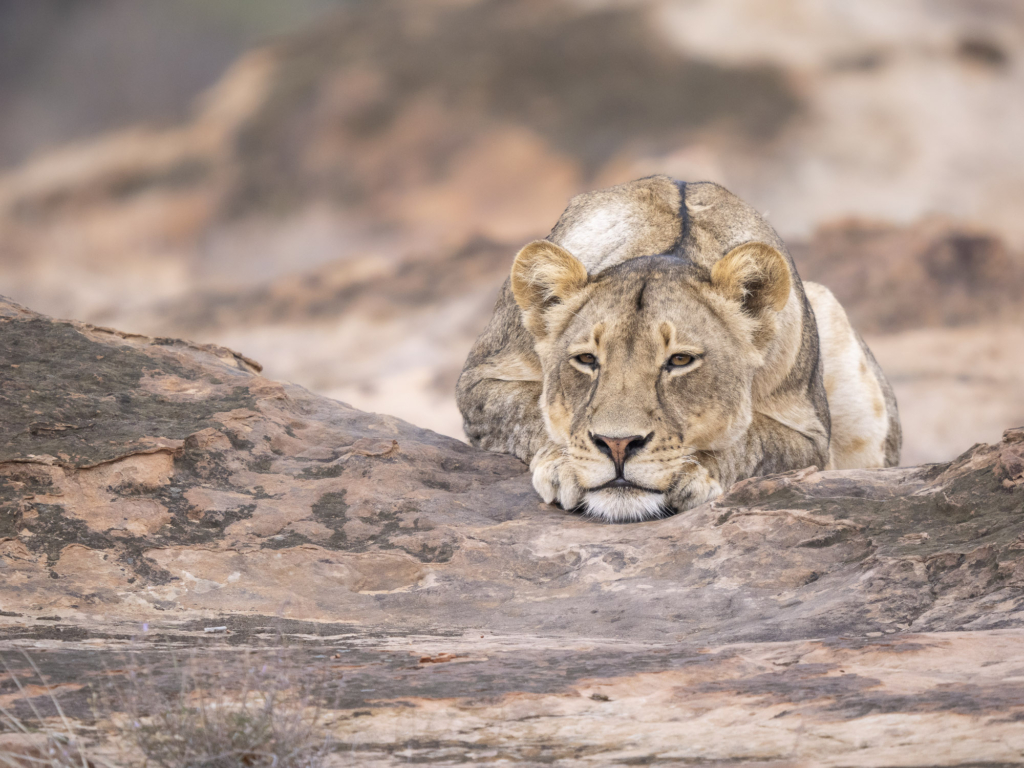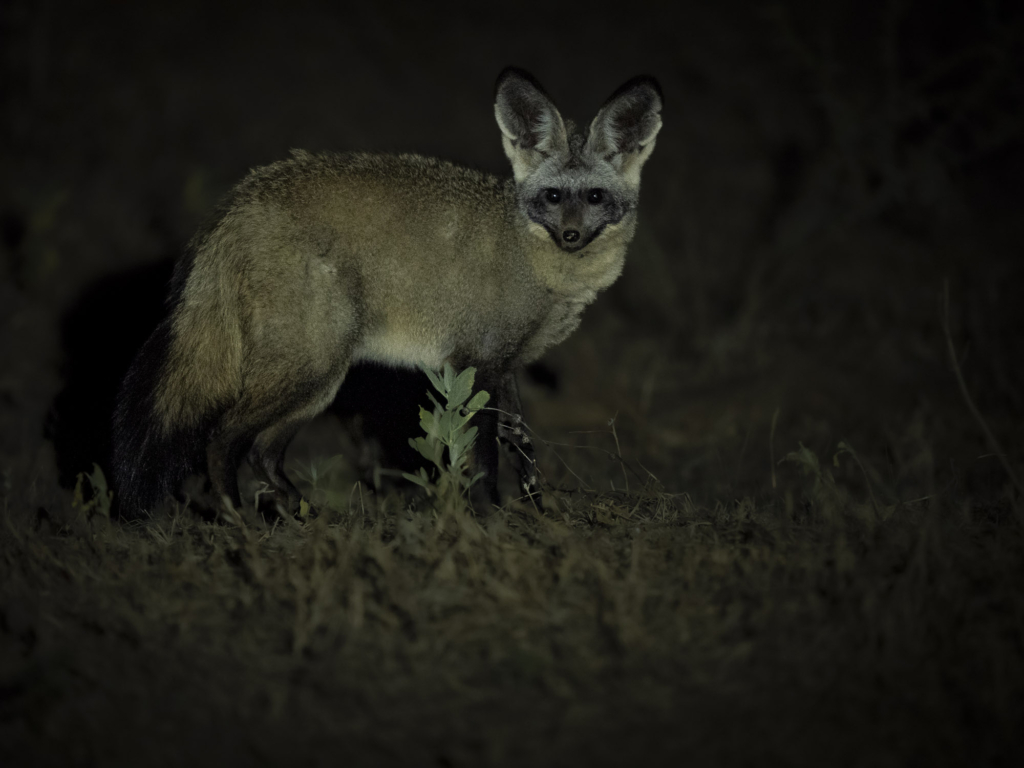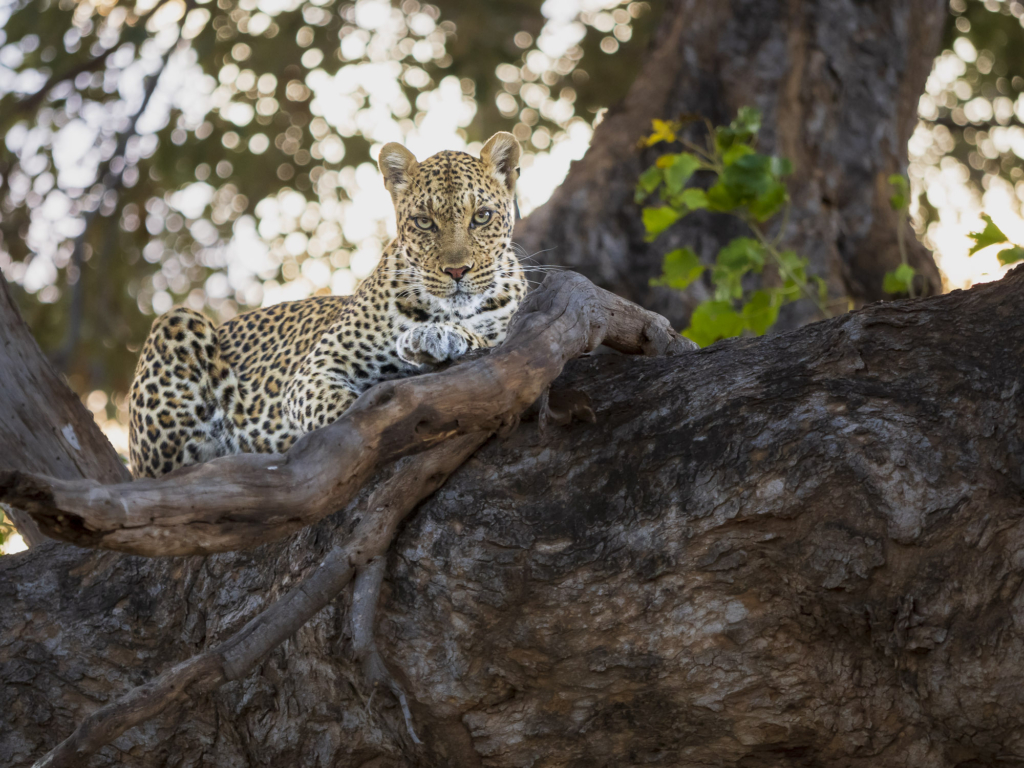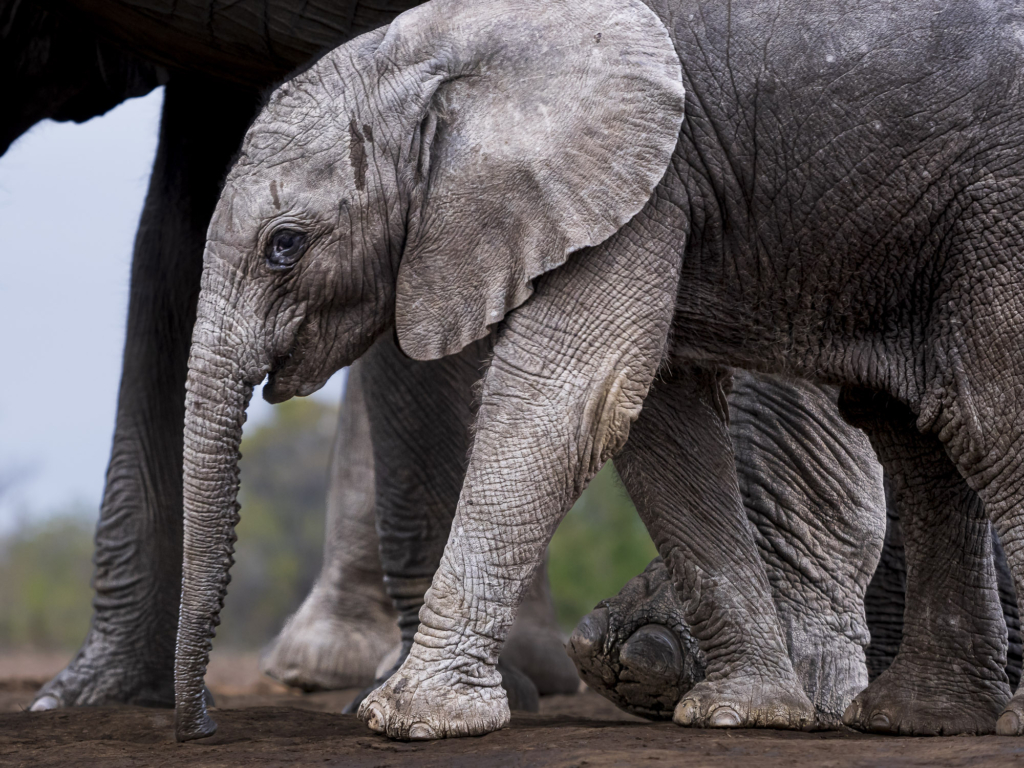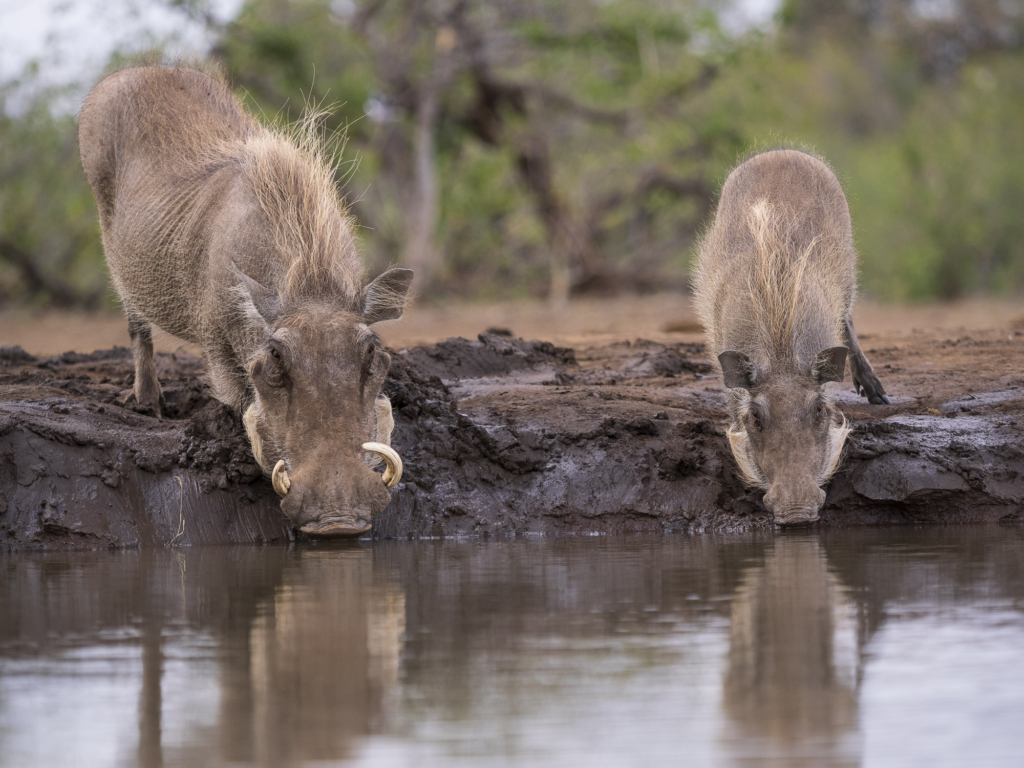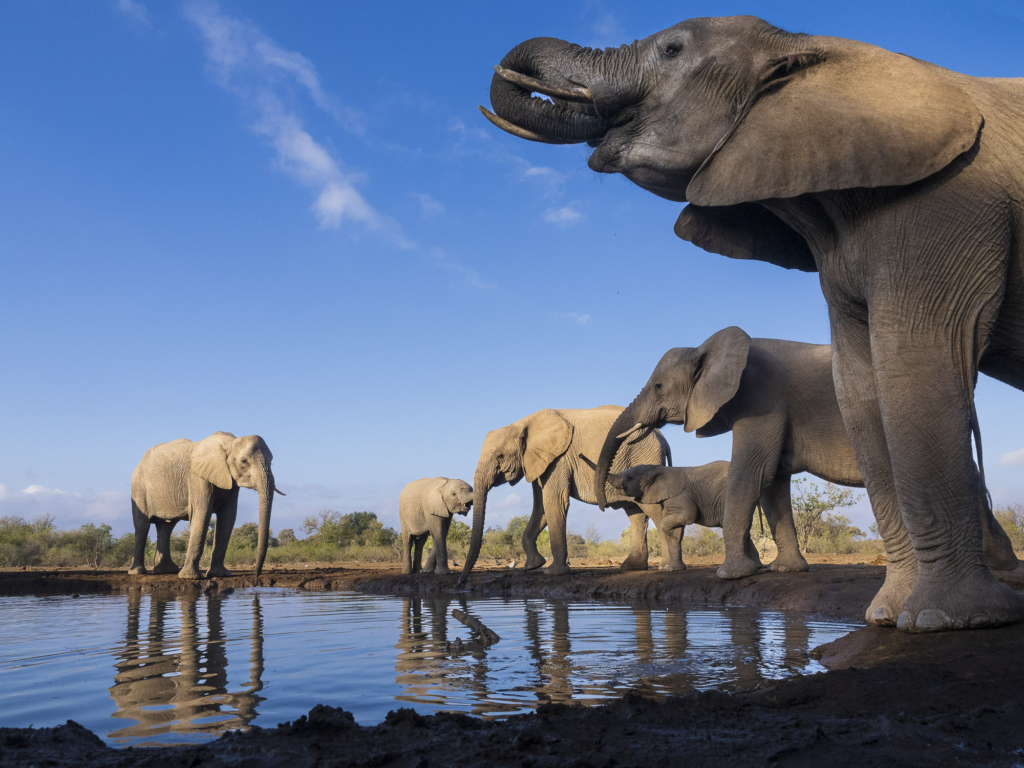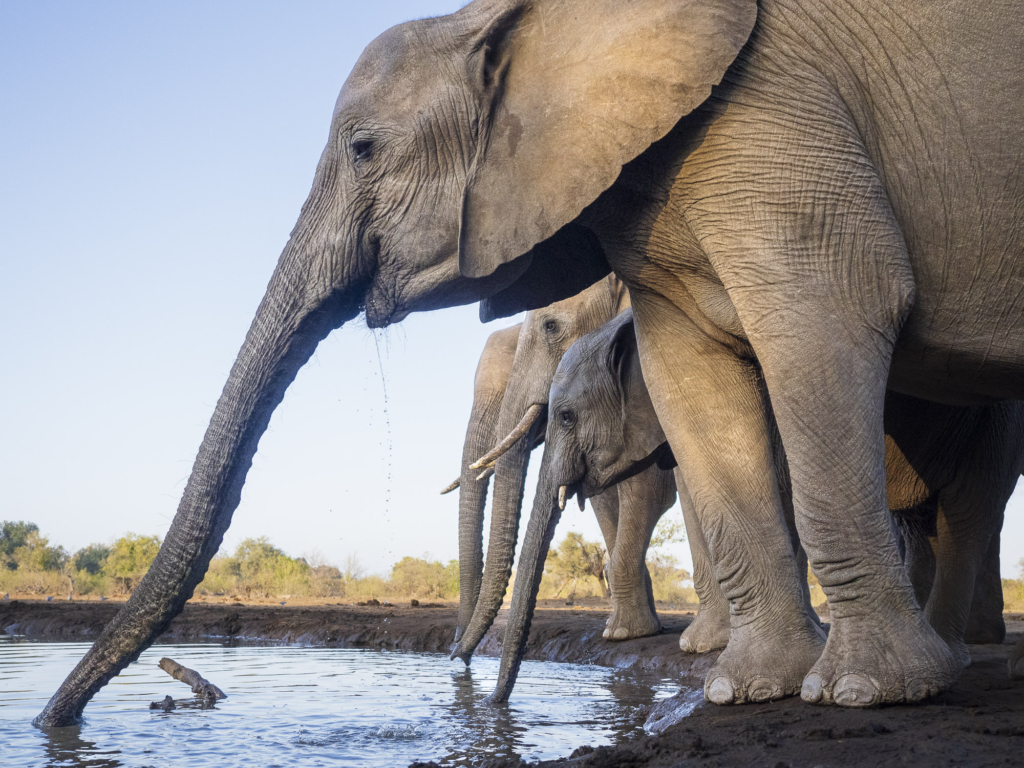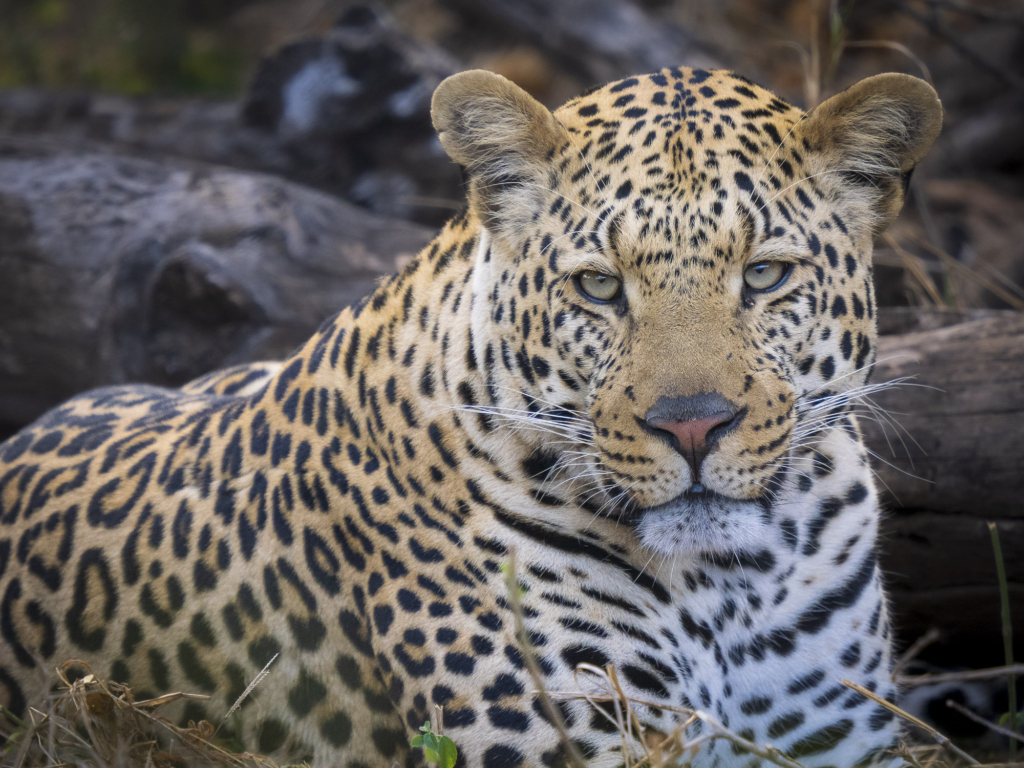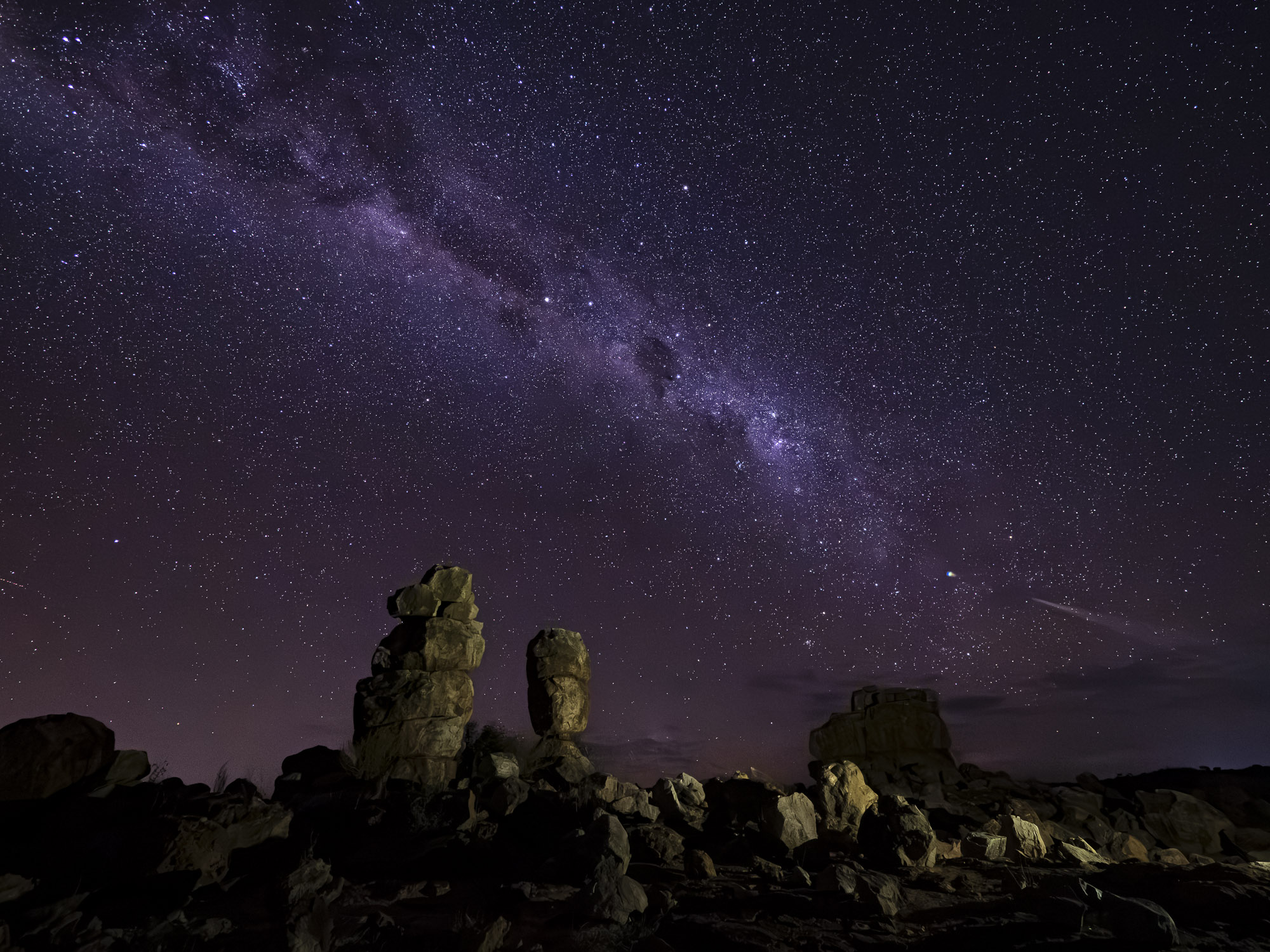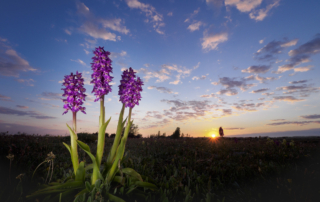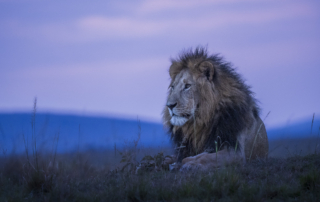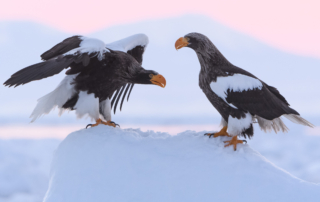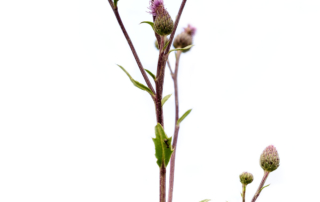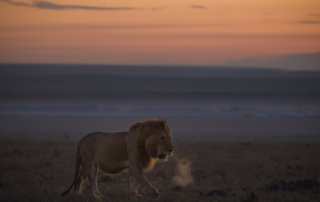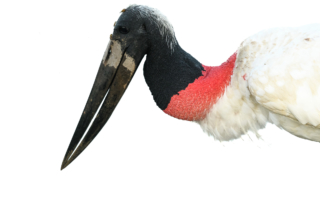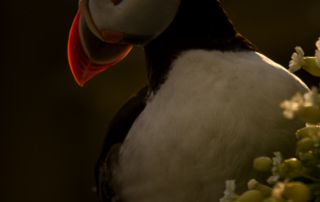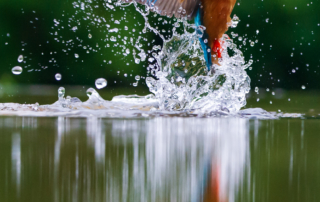
It’s still dark outside when we go into our hide next to the water hole. The sounds of the African night are slowly being replaced by the morning symphony of bird sounds. Far away, a male lion is heard calling in the morning.
When the light slowly makes the darkness to give way, we see the first animals approaching the waterhole, a group of eland antelopes moving cautiously closer and closer. Suddenly they turn sharply and disappear, a sound coming from behind our hide startled them. The sounds increase and then a group of Chacma baboons comes rushing to the waterhole. In the distance we see more and more animals coming towards us, impala antelopes, zebras and warthogs causing the baboons to disperse. Birds come and go (fly) and we photograph intensively…
So without warning they come, the first group of elephants comes silently behind our hide and walks up to the water. The feeling of awe is total when, from ground level, we look up at the nearest of the elephants standing just a few meters away from us. She exudes calm, pride and wisdom as she fills her trunk with water, slowly raises it to her mouth and drinks…
MASHATU…
…known as the “Land of Giants”, is the epitome of what defines a wilderness area in Africa. Filled with mysterious history and adorned with an abundance of wildlife, Mashatu will forever fill your senses with the feeling of Africa.
In the south-eastern corner of Botswana, which borders South Africa and Zimbabwe, lies the Northern Tuli game reserve, which is a private nature reserve of roughly 71,000 hectares divided into 36 properties. Mashatu makes up about half the area and is characterized by sparse bush and tree savanna, open plains, sandstone outcrops and wetlands.
The diversity of habitats means that the area is very rich in animals, ranging from chameleons and birds to the large animals of Africa. Mashatu has one of southern Africa’s largest elephant populations, with over 1,000 elephants roaming in the area and these are one of the absolute highlights of the tour. From a hide at a waterhole we will be able to photograph elephants from ground level. Often the elephants are only a few meters away, the feeling of being so close to this amazing animal is completely indescribable. We will photograph from the hide on at least three occasions, two morning sessions and one afternoon session, and it is not uncommon for more than a hundred elephants to visit the water hole during this time. We will experience wonderful moments with these gentle giants, we will be able to see and photograph their social behaviour, when they play (the elephants sometimes spray water into the hide) and their beauty. The elephant calfs are often curious about the hide and sometimes they look inside.
It is not only elephants that come to the waterhole, but all the time different animals move around us. Lots of birds are ever present and various antelopes come and go. The largest of them all, the Eland, is quite a cautious species and can take a long time to reach the water, while the Impala are more straightforward, not to mention the Chacma Baboons when they arrive. When we are in the hide, any animal can appear and we must always be prepared for the unexpected to happen.
One of our big hopes is of course that one of the area’s big cats will come to the waterhole and drink, and with a bit of luck, it can happen. Mashatu has plenty of the big cats so we will have many opportunities during our stay here to photograph them even if they don’t appear at the waterhole. Of the big three, cheetahs are the least common, but of course we hope to see them. There are several groups of lions in the area and with a little luck one of them might have cubs. The cats’ cat in Mashatu is after all the leopard, there is a very large population of leopards here and we can often find them relaxed and comfortably resting in one of the large Mashatu trees (nyala berry trees). It is no understatement to say that Mashatu is one of the absolute best places in Africa to see and photograph leopards.
The reserve has a varied environment and we will move through bush and tree covered savanna and follow dried riverbeds to grasslands in search of our photo subjects. Animals and birds are everywhere and the scenery is adorably beautiful. Ancient baobab trees add a dramatic feel to the landscape and a perfect foreground for our photos of the Milky Way. During a few evenings, when the weather permits, we will go out to photograph the night sky. Here the starry sky of the African night is magnificent, with almost no light pollution at all we see the Milky Way and all the other stars of the sky incredibly clearly.
Since the area is private and there are only a few lodges, the number of cars is very limited and there is never any crowds at any “sighting”. Not infrequently there is only a single safari vehicle there. The fact that the area is private also means that we can drive off-road, of course with certain rules, which improves our opportunities for better photography.
PHOTOGRAPHIC LEARNING
During the tour, our photographic leader will constantly give you photographic training based on your prior knowledge and level. The guidance in the field is completely adapted to you and your needs. In addition to this, we will also have theoretical sessions where we talk about different photo techniques that we will use during the trip. When we are in Mashatu, we will photograph starry skies and the Milky Way and before these photo sessions we will go through how we proceed. Before night photography, it is good if you can make certain settings on your camera in the dark.
We will also photograph from a hide during the tour, here we will be able to photograph everything from birds to elephants. Before these photo sessions, will we go through what is important to consider. In addition, we will cover various techniques on how you can create movement in your images by e.g. to use panning as a method. As said, the photographic learning is adapted to the knowledge of the group and the individual, but we will also see to what photographic opportunities may arise during the trip.
Itinerary
Day 1 (24/4) (Dinner)
Arrival in Johannesburg, South Africa in the afternoon. We stay over at a hotel near the airport and have a welcome dinner in the evening.
Day 2 (25/4) (Breakfast – Lunch – Dinner)
After breakfast will we start our journey towards Botswana and Mashatu, the trip takes about 4 hours. At the border with Botswana, we are met by our guides from Mashatu and they will take us the last bit to our first lodge. After we settled in and had lunch, it’s time for our first game drive. If the weather (and energy) permits, we head out to photograph the night sky after dinner.
Day 3 – 9 (26/4 – 2/5) (Breakfast – Lunch – Dinner)
During these days we will use the time as much as we can for photography. We have three sessions booked in a hide at the waterhole, two morning sessions and one afternoon session. When we are not in the hide we will have game drives in the morning and afternoon and we will also do some night game drives to look for nocturnal animals. In addition, we will take advantage of nights with clear skies to enjoy and photograph the fantastic starry sky. It will be intense but photographically very rewarding days.
After lunch on April 29, we will change lodges to one located in another area of the reserve.
Day 10 (3/5) (Breakfast – Lunch)
In the morning we have a final game drive. After lunch at our lodge, we begin the journey back to Johannesburg in South Africa and then onwards home.
Photographic leader
Henrik Karlsson, born in 1968, is a photographer, writer and conservation biologist.
He is ambassador for OM SYSTEM and has been appointed as a National Geographic Explorer. He is also a member of the Swedish Nature Photographers Association (Naturfotograferna/N) as well as PhotoNatura. In 2003 he was awarded Naturfotografernas/N and Kodak’s scholarship. Henrik has also won awards in several European photo competitions.
Henrik has a wide selection when it comes to subjects to take images of and tell stories about. He will be more than happy to photograph everything from insects to the orchids in the forest or the great wild animals around the world. He has the whole world as his photographic field but is more and more drawn to Africas beauty and wildness.
Previously, Henrik worked as a guide in several Swedish Nature Reserves and National Parks. He is a frequent lecturer and an appreciated guide on photo courses and workshops. He also leads photo tours all over the world.
In 2011 Henrik self-published the book ”Mångfaldens ö – bilder och tankar från Ölands natur”, and the book ”Vilda Norden” was published in 2017. 2020 he published the book Ölands orkidéer and in 2021 Orkidéer på Gotland.
